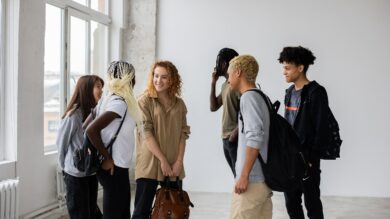The Future of Post-Secondary for Indigenous Students
During a recent session of the Series on Indigenous Issues and Initiatives organized by PPF and Stratéjuste Canada, Indspire President and CEO Mike DeGagné spoke of what he sees as ways for post-secondary institutions to support Indigenous success in the coming years.
As the former President of Nipissing University and a PhD in Indigenous education, Dr. DeGagné knows a thing or two about the history and present of post-secondary for Indigenous students. On this occasion, he was asked to look in the crystal ball to see what the future would look like. Rather than trying to predict it, he offered suggestions to attendees on how they can best support students to achieve the reality he seeks.
He outlined the stark reality in numbers: the number of Indigenous post-secondary students has exploded in recent years from 6,000 in 1980 to 21,000 in 1990 to over 200,000 in the 2010s. Indigenous People are the youngest and fastest growing segment of the Canadian population. The funding to support these students remained basically unchanged from 1995 to 2016 despite that massive growth. There’s also still a massive gap in outcomes. Globally, Canada is 12th on the Human Development Index. From 2006 to 2016, First Nations on-reserve would have improved from 89th to 78th and off-reserve from 47th to 42. The gap in community well-being is almost completely unchanged and quite significant.
Enter post-secondary education as a way to reduce and eventually eliminate that gap. Dr. DeGagné offered a continuum of supports to get Indigenous students towards a future that matches their ambitions. Rather than just give pamphlets with glossy information, he suggests these six points:
- Aspiration: Indigenous youth need role models and mentors to show them why they’d want to follow this path and what it opens up to them as opportunities. This involves a bigger presence in communities and starting with younger students.
- Preparation: It can be a steep learning curve for students who might leave their community to attend a university with a bigger student population than their community. There needs to be a better transition. Nipissing’s Summer Indigenous Institute offers just that – a chance to experience a bit of university life and ease into relevant course work.
- Application: He related how he was rejected from a number of programs before eventually getting in. Getting past ‘no’ is a valuable learning and students need to understand it doesn’t mean they should give up.
- Participation: Post-secondary is not just about attending class and submitting assignments. More needs to be done for Indigenous students to be engaged in university life. Developing self-advocacy skills to support their own success, the students will help themselves elsewhere in life.
- Graduation: Education doesn’t end with the receipt of a piece of paper. Mentors need to help through the next piece as the new grads wrestle with the labour market.
- Vocation: As they go forward, the focus needs to be on what will ensure both individual and community success.
Dr. DeGagné also advocated for an uncoupling of the four-year template. There should be a more fluid way to get to graduation as students return home on occasion and should feel comfortable returning. The assumption that they even need to leave their community should be reviewed as well.
During the Q & A portion, someone asked about some universities who are doing things right. Mike noted Nipissing, UNBC, Vancouver Island University and Lakehead as institutions that have embraced not just one of the TRC’s Calls to Action but all of them holistically. They act in four large areas:
- People: As part of Indigenizing institutions, professors and support staff need to be hired who are part of the communities they teach and serve.
- Policies: Like with the recent Black Lives Matter movement, a review and removal of policies that discriminate against Indigenous students needs to take place.
- Structures: Introducing an Elders Council and an Indigenous education office will give weight to the work being done.
- Ceremonies: Events that celebrate, recognize and bring together the Indigenous populations on campus with others are important.
There’s a reason Dr. DeGagné has spoken six times at the series. His insights and long history of getting things done bring together large audiences. With the shift to virtual programming, attendees from across the country were able to hear his message. With his role at Indspire, he’ll be able to support the new generation of Indigenous students heading into institutions that will be better able to help them succeed.





